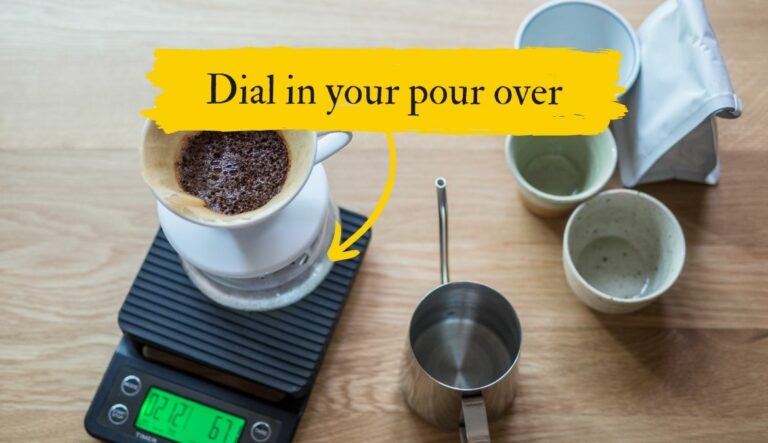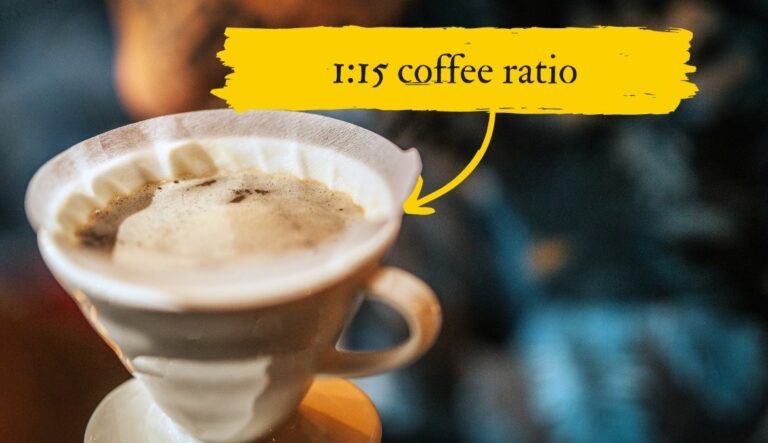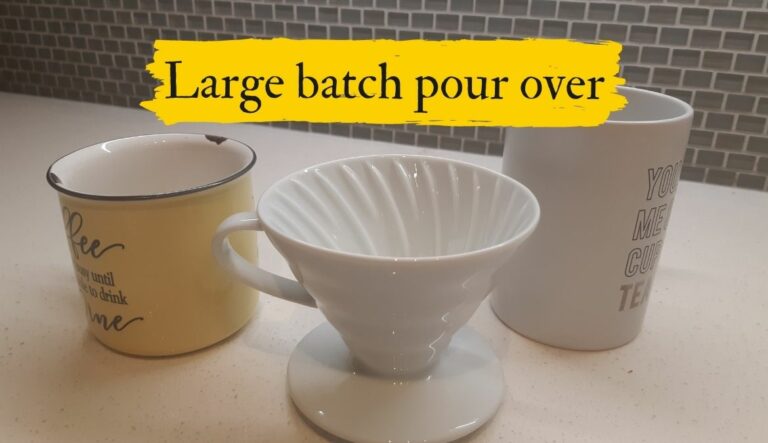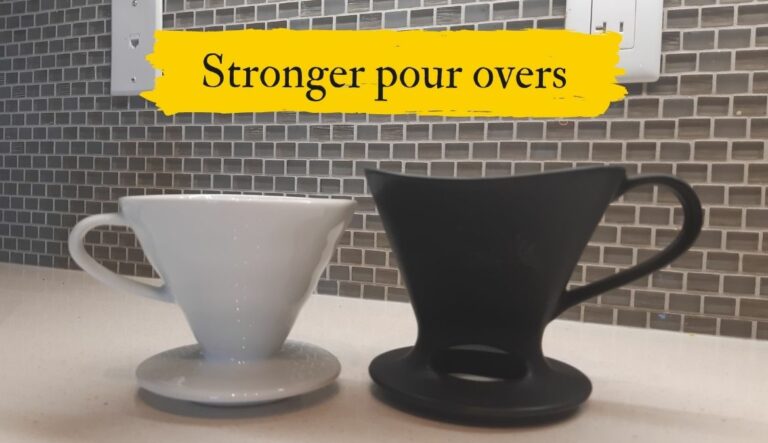Dialing in the grind size, roast level and brew duration are important for brewing a perfect cup of pour over coffee. But what is the perfect temperature for pour over coffee?
199-205°F (93-96°C) is the best water temperature for brewing pour over coffee because it produces an optimal brew strength and extraction yield. This will maximize pleasant aromas and flavors in your coffee while minimizing unpleasant ones.
You might be surprised to learn why brew temperature is so important and how it affects your pour over coffee. This article shares some studies that reveal some interesting water temperature insights.
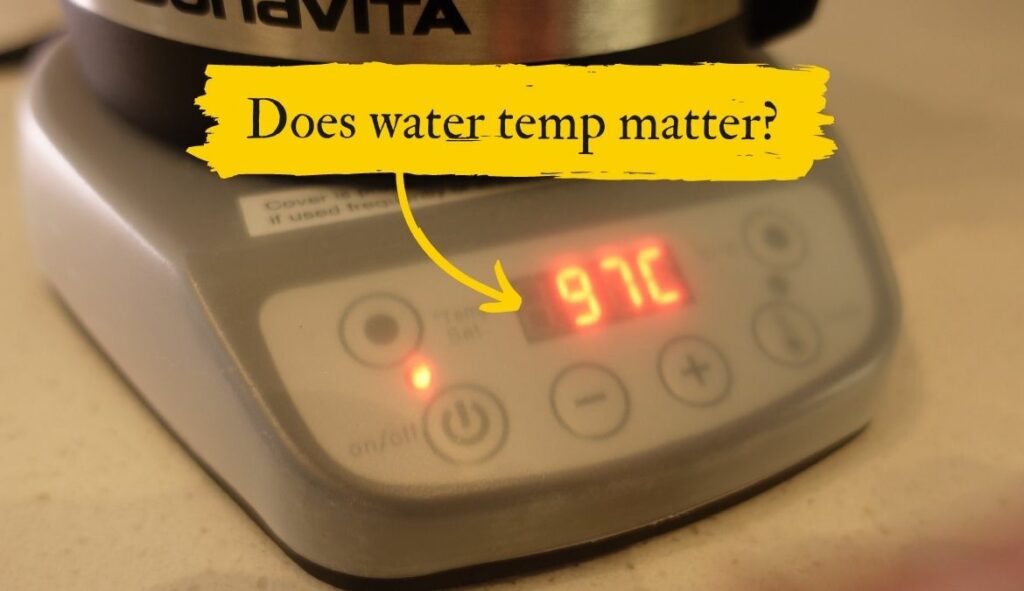
Why does water temperature matter for pour over coffee?
Brewing water temperature affects how many solids dissolve into coffee and how quickly extraction happens. An optimal and consistent water temperature will allow you to produce the best tasting coffee every time you brew a batch.
The brew temperature works hand-in-hand with the grind size to make sure an appropriate amount of solids are extracted from the ground coffee beans.
Can water be too hot for pour over coffee?
Boiling water that is too hot may cause coffee to taste bitter and astringent due to over extraction of soluble coffee bean compounds. Also, water at its boiling point is very turbulent and may cause uneven extraction by disturbing the ground coffee bed.
Can you use boiling water for pour over coffee?
You can use boiling water for pour over coffee if you live at an altitude between 3,500-7,000 meters above sea level (1,067-2,134 feet). This is because water will boil at an optimal 199-205°f (93-96°C) between these elevations. Water at sea level will boil at 212°f (100°C), which is a little too hot for brewing coffee.
How water temperature affects pour over brew strength
Brew strength measures the concentration of soluble coffee bean material that has dissolved into the beverage. This is measured using a metric called total dissolved solids (TDS), which is usually reported in parts-per-million (ppm).
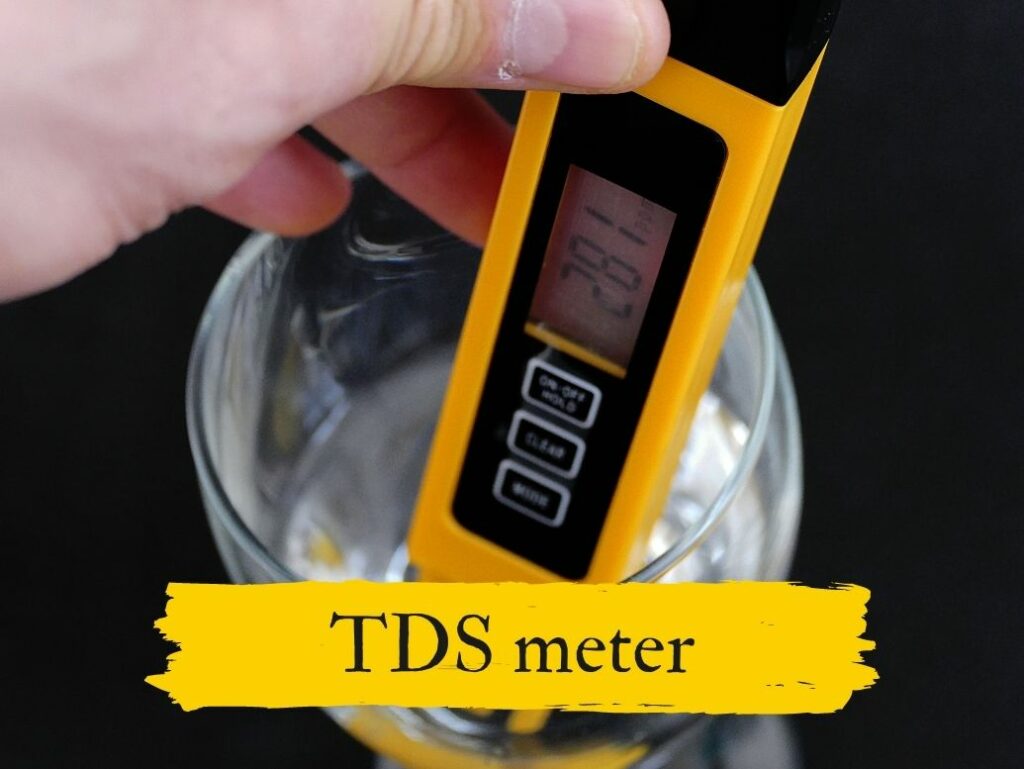
A study from Rao et al. (2020) discovered that a higher brew temperature resulted in a higher concentration of TDS. Other studies and anecdotal reports support this understanding as well.
In other words, this means that coffee beans transform into coffee more quickly when the water temperature is higher.
This also means that if all other variables remain the same, brew temperature will affect how pour over coffee tastes after being brewed.
Tap water contains minerals and other dissolved solids to begin with, which means the starting TDS will be above 0ppm. A brewed cup of coffee will increase in TDS. The difference between the final TDS and the starting TDS is how we measure brew strength.
How water temperature affects pour over flavor profile
A study from Batali et al. (2020) discovered that brew temperature affects the perception of certain flavors in coffee, but not significantly[1]. The study found that nutty flavors were found to be significantly more prominent at a 90°C brew temperature than at both lower and higher temperatures.
Other than nuttiness, this study did not observe significant differences in specific coffee flavors as a result of water temperature.
How water temperature affects pour over extraction yield
Although the flavor perception among brew temperatures of 87°C, 90°C and 93°C were not significant in this 2020 study, the 93°C brew did show a clear increase in extraction yield. In other words, hotter water extracted soluble coffee bean material more quickly.
Extraction yield measures the percentage of soluble solids that have been extracted, or removed, from coffee beans into a brewed cup of coffee. This is represented as a percentage.
An extraction yield of 10% means that 10 percent of the coffee bean’s total soluble solids were dissolved in the coffee. An extraction yield between 18-22% is considered best for bringing out the best flavors in coffee, while minimizing unpleasant bitter compounds, according to the Specialty Coffee Association’s Golden Cup Standard.
As a result, water temperature’s effect on extraction yield plays an important role in brewing a delicious cup of Joe.
Why does hot water increase coffee solubility?
Fast moving molecules in hot water contact soluble material more often, causing extraction to happen more quickly. Colder brew water will have slower moving molecules and not contact the soluble coffee bean compounds as frequently, limiting the rate at which extraction can occur.
Rao et al. (2020) also hypothesize that hot water may wetten a coffee bean’s surface oil more effectively, which may affect its ability to dissolve more quickly[2].
References
- Batali, M. E., Ristenpart, W. D., & Guinard, J. X. (2020). Brew temperature, at fixed brew strength and extraction, has little impact on the sensory profile of drip brew coffee. Scientific reports, 10(1), 1-14.
- Rao, N. Z., Fuller, M., & Grim, M. D. (2020). Physiochemical characteristics of hot and cold brew coffee chemistry: The effects of roast level and brewing temperature on compound extraction. Foods, 9(7), 902.



